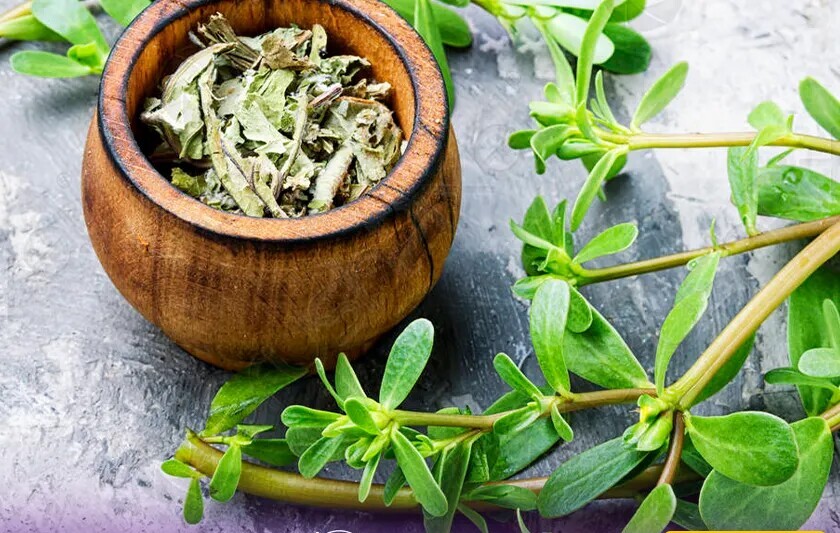Purslane is a low-calorie plant and can be effective in a diet. Let's explore how purslane affects weight loss with Saed News.


Purslane is an annual herbaceous plant with a watery texture and a sweet and sour taste. The plant, which includes edible leaves, stems, flowers, and seeds, is widely used in Europe, Asia, the Middle East, and Africa. Purslane's health benefits are abundant, thanks to its rich nutritional content. It contains high amounts of omega-3 fatty acids, fiber, vitamins B, C, and A, iron, magnesium, potassium, calcium, manganese, and copper. Purslane is recognized in traditional medicine for its medicinal properties. It is commonly used in Chinese traditional medicine to treat bloody diarrhea, gastrointestinal bleeding, and hemorrhoids, as well as for improving digestive function. Additionally, it helps strengthen vision and prevents cataracts. Purslane’s calcium, magnesium, iron, and manganese content helps heal bones and prevent osteoporosis.
Alpha-linolenic acid and palmitic acid are fatty acids that, once ingested, convert into essential omega-3 fatty acids in the body. Omega-3 fatty acids are well-known for their anti-inflammatory properties and are beneficial for heart and vascular health. Purslane seeds are effective against tapeworms, and extracts from its stems and leaves are beneficial for liver diseases and vitamin C deficiencies, although less potent than watercress. Purslane contains up to 25 grams of vitamin C per 100 grams of leaves, and it is prescribed as a diet for individuals with scurvy.
Consuming foods rich in omega-3 fatty acids can lower the risk of cardiovascular diseases and arteriosclerosis, thereby preventing heart attacks and strokes. Additionally, the potassium in purslane can dilate blood vessels, lowering blood pressure and reducing strain on the heart. Although further research on omega-3 fatty acids is ongoing, initial findings suggest that higher levels of omega-3 in children's diets may prevent certain developmental disorders such as autism and ADHD. Purslane is also used to treat various intestinal diseases due to organic compounds such as dopamine, malic acid, citric acid, and alanine. It can aid in treating various skin problems, and its topical use can help alleviate inflammation caused by insect or snake bites. Purslane improves skin health, reduces wrinkles, enhances skin cells, and removes scars and blemishes.

Purslane is a great food for weight loss. Due to its high fiber content, purslane promotes feelings of fullness and helps prevent overeating. The fiber aids in digestion, increases metabolic rate, and helps the body burn fat. Despite being low in calories, purslane is nutrient-dense and helps individuals feel full without consuming excessive calories. This makes it a great addition to any diet for those looking to manage their weight.

Despite its numerous health benefits, purslane has some potential drawbacks. It contains oxalates, which may contribute to kidney stones, so individuals with kidney issues should avoid it. Oxalates may also interfere with the absorption of essential minerals like calcium and magnesium. To reduce oxalates, purslane can be consumed with yogurt or boiled. Additionally, due to its potential to induce menstruation, pregnant women should avoid purslane as it could pose a risk of miscarriage.
Purslane is one of the most beneficial medicinal plants, with a long history of use in traditional medicine for treating various diseases. Its seeds help treat obesity and liver conditions. This herb also strengthens the heart and boosts sexual desire in individuals with a warm temperament. Purslane is widely used in the preparation of many dishes, and its leaves are often used in soups or as a side vegetable.

